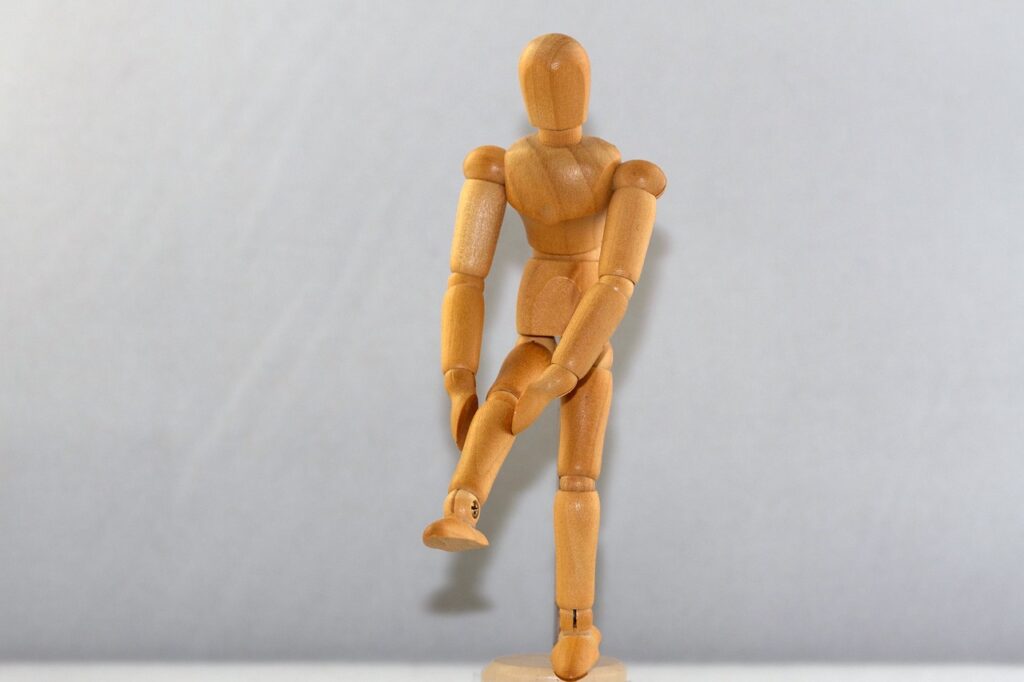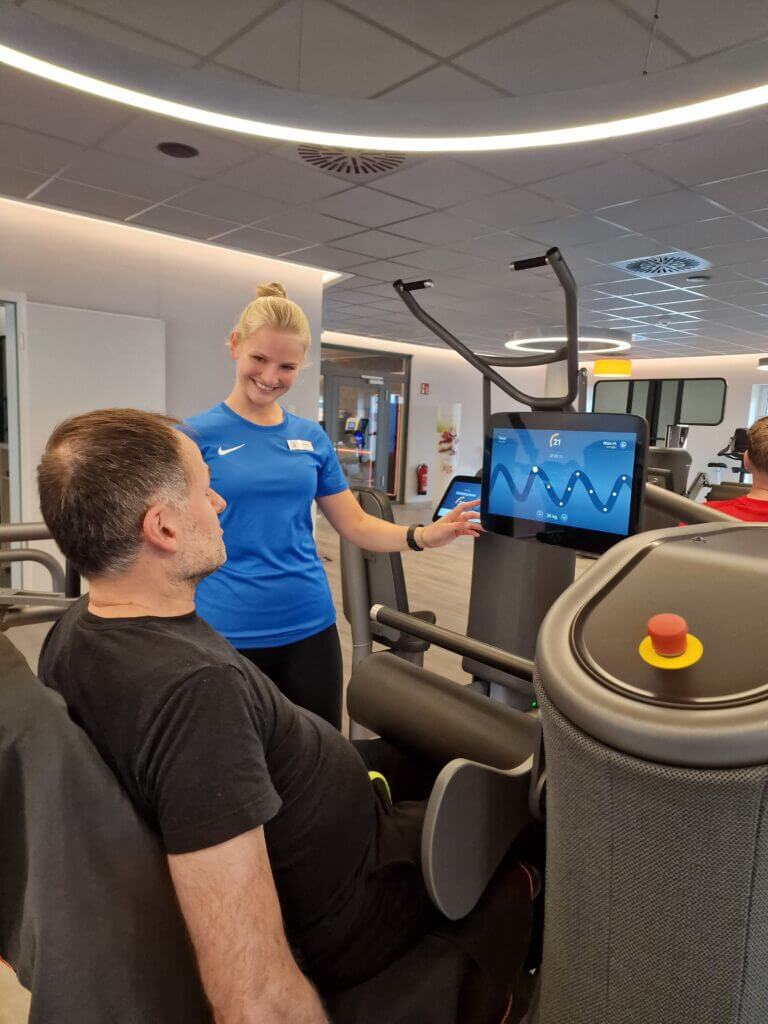Vordere Kreuzbandruptur
Was ist ein Kreuzbandruptur?
Hierbei handelt es sich um einen teilweise oder vollständigen Riss des vorderen oder hinteren Kreuzbandes. Da das vordere Kreuzband sehr viel häufiger betroffen ist, konzentrieren wir uns hier auf diese Art des Risses.
Wie kommt es zum Kreuzbandriss?
Am häufigsten kommt es zu der Verletzung durch eine Kombination aus Traumata, i. d. R. beim Sport (wie beim Fußballspielen oder Skifahren) entstanden, bei denen die Dehnungsreserve des Kreuzbandes überschritten wird.

Symptome
Betroffene spüren meist ein reißendes Gefühl im Knie während der Verletzung, ebenso ist oftmals ein „Plop-Geräusch“ zu vernehmen. Darauf folgt ein Anschwellen und Schmerzen, die mit Bewegungs- und Belastungseinschränkungen einhergehen. Dies geht nach einigen Tagen zurück, ebenso wie die Schmerzen. Was bleibt, ist eine Instabilität im betroffenen Knie.
Diagnose & Begleitverletzungen
Der behandelnde Arzt befragt den Patienten nach dem Unfallhergang und den aktuellen Beschwerden. Darüber hinaus führt er erste Untersuchungen durch.
Wenn der Verdacht auf eine Kreuzbandruptur besteht, werden verschiedene Mittel eingesetzt, um Begleitverletzungen auszuschließen. Dazu gehören z. B. Röntgen und MRT. Mögliche Begleitverletzungen sind etwa eine Verletzung des Meniskus und/oder an Seitenbändern. Ebenso kann Knorpel beschädigt werden.
Wenn das Knie ausgesprochen geschwollen ist, kann eine Entlastungspunktion notwendig sein.


Konservative oder operative Behandlung?
Ob ein Kreuzband operiert wird oder nicht, hängt von einer Reihe von Umständen ab. Diese werden mit dem Arzt gemeinsam im Detail besprochen. Hier spielen Faktoren, wie Zusatzverletzungen, Schmerzen und welchen Belastungen das Kniegelenk standhalten muss, eine Rolle.
Wenn eine operative Behandlung gewählt wird, findet i. d. R. eine Arthroskopie statt.
Welche Rolle spielt Physiotherapie & Krafttraining?
Sowohl wenn die konservative Behandlung gewählt wird, als auch bei einer operativen Behandlung spielt Physiotherapie eine wichtige Rolle. Sie hilft dabei, das Knie zu stabilisieren, die Beweglichkeit zu verbessern und Kraft aufzubauen.
Wenn eine Operation stattgefunden hat, wird bereits kurze Zeit später mit intensiver ambulanter Physiotherapie begonnen. Es kommt allerdings auch vor, dass Physiotherapeutisch erstmal an einer Stabilisierung des Gelenks gearbeitet wird, bevor es zur Operation kommt. Dies kann mitunter 2–4 Monate in Anspruch nehmen.
Die Physiotherapie ist ein bedeutender Faktor, sowohl, wenn Patienten den konservativen, als auch den operativen Weg wählen. Die Therapeuten richten die Therapie individuell auf den Patienten aus und geben in der Regel Übungen für zu Hause mit auf dem Weg. Sie helfen dabei, das Risiko für zukünftige Beschwerden und Risse im Knie zu minimieren.
Krafttraining kann nach einer Ruptur ein wichtiger Bestandteil der Rehabilitation sein, um die Muskulatur, um das Knie herum zu stärken und um die Stabilität des Kniegelenks wiederherzustellen. Hierbei ist wichtig, dass ein Spezialist hinzugezogen wird – dies kann ein Physiotherapeut oder Sportarzt sein. Die Rehabilitation wird in mehrere Phasen eingeteilt. Was in welcher Phase gemacht werden darf und sollte, verändert sich, weshalb der Expertenrat so wichtig ist. Durch unseren Zusammenschluss aus Physiotherapie und Kraftsport, sind wir in der Lage, das Training perfekt auf deine Bedürfnisse und den Stand deiner Genesung abzustimmen. Komm gerne vorbei und vereinbare einen unverbindlichen Termin mit unseren Experten.

Jeder unserer Artikel wurde außerdem von unseren Experten kontrolliert.
Kreuzbandruptur – DocCheck Flexikon
Vorderer Kreuzbandriss / vordere Kreuzbandruptur – KSW
Vordere Kreuzbandruptur – Ursachen, Diagnose und Behandlung
Behandlung Kreuzbandriss – Kreuzbandruptur – Schulthess Klinik
Rehabilitation nach Ersatz des vorderen Kreuzbandes – Sportorthopädie Braunschweig
Kontakt
Hohe Luft 10, 27404 Zeven
04281 / 2180
© Copyright 2024. Physioteam Höltge - Gesundheitszentrum. All rights reserved.
Made with ❤ by Lynn Höltge
